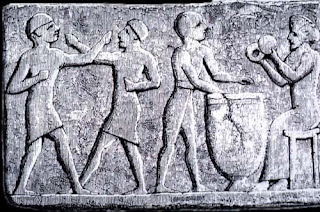Comparative Analysis of "Footfalls" by Samuel Beckett and the Notion of Stepping Nine Times

"Footfalls" by Samuel Beckett is a thought-provoking play that explores themes of isolation, time, and the human condition. In this essay, we will compare the concept of stepping nine times, as discussed in the context of Paimon's occult practices, with Beckett's play "Footfalls." Additionally, we will delve into the representation of characters in the play and their significance in relation to the notion of stepping. In both the occult practices associated with Paimon and the concept of stepping in "Footfalls," there is an underlying emphasis on the union of opposites and the reconciliation of opposing forces. Stepping nine times, as seen in Paimon's rituals and the Sanchin kata of Uechi Ryu karate, symbolizes a process of harmonizing dualistic aspects. Similarly, in "Footfalls," the act of pacing back and forth by the character May can be interpreted as a physical embodiment of this concept. The repetition of the footfalls in the pl...







